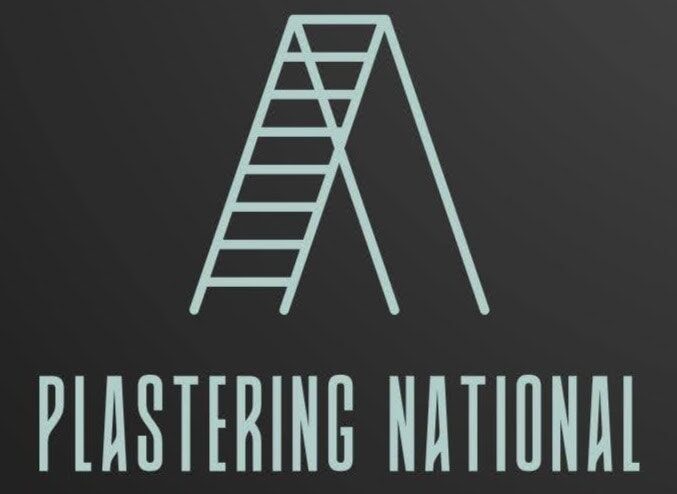Plastered walls are a cornerstone of modern interior design, offering durability, elegance, and versatility. However, ensuring these walls retain their appeal and functionality requires a professional approach to maintenance and protection.
With expert care, your plastered walls can stand the test of time while enhancing the beauty of your space. This guide provides actionable insights based on industry expertise to help you achieve long-lasting results.
Let’s Get Straight to the Point
Proper maintenance and protection of plastered walls ensure their longevity, aesthetic appeal, and structural integrity. Key practices include regular dusting, gentle cleaning, and prompt repairs for cracks or stains.
Moisture is a primary threat; prevent damage with waterproof coatings, improved ventilation, and timely leak repairs. Seasonal care, such as managing humidity and temperature fluctuations, protects walls from expansion, cracking, or mould growth.
Invest in protective coatings, wall accessories, and periodic professional services for long-term durability. A proactive approach and adherence to expert recommendations ensure plastered walls remain durable and visually appealing for years.
The Importance of Maintaining Plastered Walls

Why Proper Care is Essential
Plastered walls are not just a design choice; they are a structural element that enhances your space’s durability and aesthetic value. Neglecting proper care can result in visible wear and tear, such as cracking, peeling, and water damage.
By maintaining these walls, you ensure:
- Extended lifespan: Regular care prevents damage and maintains the structural integrity of your walls.
- Aesthetic appeal: Proper maintenance ensures the walls retain their smooth, seamless finish.
- Cost efficiency: Addressing minor issues early can save you from costly repairs or complete wall replacements.
Professionals recommend adopting a proactive approach, as even minor neglect can escalate into significant problems that impact the overall value of your property.
Daily Maintenance for Plastered Walls
1. Keeping Surfaces Clean
The daily accumulation of dust and dirt can dull the appearance of your plastered walls, making them look unkempt. Here’s how to keep them in pristine condition:
- Dust regularly: Use a soft microfibre cloth or feather duster to remove surface debris gently. This prevents dirt from settling into the surface texture of the plaster.
- Spot-clean stains immediately: Use a damp cloth with a small amount of mild detergent for minor stains. Test the solution on an inconspicuous area first to ensure it doesn’t affect the paint or plaster.
- Avoid harsh chemicals: Abrasive cleaners or heavy-duty detergents can damage the plaster’s finish, leading to discolouration or deterioration.
2. Minimising Damage from Everyday Activities
Everyday activities can inadvertently harm your walls. Prevent common causes of damage with these tips:
- Install furniture pads: Place protective pads on furniture legs to avoid accidental scuff marks or scratches.
- Limit contact with sharp objects: Educate family members or employees to handle objects carefully near the walls.
- Use appropriate wall hooks: Opt for wall-mounted fixtures that distribute weight evenly, reducing stress on the plaster.
Protecting Plastered Walls from Moisture
1. Recognising Moisture-Related Risks
Moisture is one of the leading causes of plaster damage, often resulting in stains, mould, or even structural weakening. Identify high-risk areas in your home or workplace, such as:
- Bathrooms
- Kitchens
- Basements
- Rooms with poor ventilation or leaky windows
2. Proven Moisture Control Techniques
- Ventilation is key: High humidity levels can lead to condensation on plastered walls. Install exhaust fans or open windows to promote airflow in moisture-prone areas.
- Apply waterproof coatings: Protective sealants or water-resistant paints are especially beneficial for bathrooms and kitchens. These coatings create a barrier that prevents moisture from seeping into the plaster.
- Inspect for leaks regularly: Check plumbing and roofing systems for leaks that could lead to water damage. Promptly repair any issues to avoid long-term effects.
- Dehumidifiers: In high-humidity areas, a dehumidifier can help maintain optimal moisture levels, protecting the plaster and reducing the risk of mould growth.
Regular Inspection and Maintenance
1. Detecting and Addressing Cracks
Cracks in plastered walls can range from superficial to structural. Regular inspections can help you catch problems before they escalate. Here’s what to look for:
- Hairline cracks: These are usually cosmetic and can be filled with a high-quality plaster filler.
- Deeper structural cracks: Often caused by shifting foundations or water damage, these require professional assessment and repair.
Steps to Repair Cracks
- Clean the affected area to remove dust or debris.
- Apply a suitable filler using a putty knife, ensuring it penetrates the crack fully.
- Sand the area once the filler dries, then repaint for a seamless finish.
2. Repainting and Refreshing Walls
Repainting plastered walls not only refreshes their appearance but also provides an added layer of protection against environmental factors. Follow these steps for professional results:
- Select high-quality paint: Use paints specifically designed for plastered walls, such as breathable and washable options.
- Prepare the surface thoroughly: Sand the surface to remove imperfections, clean away dust, and apply a primer to ensure even paint adhesion.
- Repaint as needed: Touch up areas where paint is fading, chipping, or peeling to maintain a polished look.
Long-Term Protection for Plastered Walls
1. Applying Advanced Protective Coatings
To maximise the durability of plastered walls, consider applying advanced protective treatments. These coatings offer several benefits, such as:
- Waterproofing: Ideal for moisture-prone environments.
- Anti-stain properties: Useful in kitchens or hallways where spills and stains are common.
- UV resistance: Prevents fading in areas exposed to direct sunlight.
2. Enhancing Durability with Wall Accessories
Accessories can provide additional protection and enhance the usability of your plastered walls. Options include:
- Chair rails and wainscoting: Protect lower walls from scuffs caused by furniture or foot traffic.
- Wall panels: Add a decorative element while shielding the plaster.
- Removable wallpapers: These are both practical and stylish, offering easy maintenance.
Seasonal Care for Plastered Walls
1. Preparing for Warm Weather
During the summer months, high temperatures can cause plaster to expand, leading to cracks. Here’s how to mitigate potential damage:
- Insulate the building: Proper insulation helps maintain stable indoor temperatures, reducing stress on plastered walls.
- Block direct sunlight: Use blinds, curtains, or window films to prevent heat buildup.
- Monitor humidity: Use a dehumidifier or air conditioner to maintain a balanced indoor environment.
2. Winter Protection Tips
Cold weather can lead to condensation and moisture-related damage. Protect your walls by:
- Sealing gaps and drafts: Check for cracks around windows or doors and seal them with weatherproofing materials.
- Using a consistent heating schedule: Sudden temperature changes can cause plaster to contract and crack.
- Managing indoor humidity: A humidifier can prevent air from becoming too dry, which may cause plaster to shrink and crack.
Best Practices for Cleaning Plastered Walls
1. Safe Cleaning Techniques
Maintaining clean plastered walls requires a gentle touch to avoid damage. Best practices include:
- Damp cloth cleaning: Use a lightly dampened cloth rather than soaking the surface, which can weaken the plaster.
- Gentle solutions: Opt for non-abrasive, mild cleaning agents.
- Testing first: Always test cleaning products on an inconspicuous area to ensure they won’t harm the finish.
2. Tackling Persistent Stains
Stubborn stains require specialised solutions. Professional cleaners often recommend:
- Baking soda paste: Mix baking soda with water for a natural, effective cleaner.
- Dish soap solutions: A diluted mixture can effectively break down grease or grime without harming the plaster.
- Commercial stain removers: Choose products formulated for painted or plastered surfaces.
Common Problems and Solutions
1. Addressing Cracks and Flaking
Cracks and flaking are among the most common issues faced by plastered walls. These problems are often caused by:
- Improper application during installation.
- Ageing and natural wear.
- Moisture infiltration.
Repair Tips
- Remove loose plaster or paint with a scraper.
- Apply a stabilising solution to ensure a firm bond.
- Reapply plaster and finish with a matching paint colour.
2. Managing Mould and Mildew
Mould and mildew pose serious risks to plastered walls, especially in humid climates. To combat these issues:
- Use anti-mould sprays designed to kill and prevent recurrence.
- Improve air circulation with fans or windows.
- Regularly clean walls in high-humidity areas.
3. Resolving Staining from Leaks
Water stains can indicate underlying leaks. Address them promptly by:
- Locating and repairing the source of the leak.
- Treating the stain with a blocking primer.
- Repainting with water-resistant paint for added protection.
Prolonging the Life of Plastered Walls

1. Professional Maintenance Services
While DIY solutions work for minor issues, professional services ensure comprehensive care. Experts can:
- Assess structural damage accurately.
- Provide advanced repairs for extensive cracking or mould growth.
- Recommend and apply specialised treatments tailored to your wall’s needs.
2. Adopting Preventive Strategies
A proactive approach is the best way to protect plastered walls. Follow these strategies:
- Inspect your walls at least twice a year for signs of damage.
- Address minor problems immediately to prevent escalation.
- Train household members on proper wall care to avoid accidental damage.
Conclusion
Maintaining and protecting plastered walls requires a commitment to regular care, professional-grade products, and preventive measures. Following the expert advice outlined in this guide, you can ensure your plastered walls remain strong, beautiful, and functional for years. Trust in proven techniques and professional services to safeguard your investment and enjoy a space that exudes quality and durability.
Frequently Asked Questions
How often should I clean my plastered walls?
Dust-plastered walls weekly and spot-clean stains as needed. To maintain their appearance without causing damage, deep clean them every few months using a mild detergent and a damp cloth.
What can I do to prevent cracks in plastered walls?
Manage indoor humidity, avoid rapid temperature changes, and ensure proper building insulation to prevent cracks. Address minor cracks promptly with filler to prevent them from worsening.
How do I protect plastered walls in high-moisture areas like bathrooms?
In moisture-prone spaces, plaster walls with waterproof coatings or water-resistant paints. Ensure proper ventilation with exhaust fans and fix leaks to prevent water damage.
What’s the best way to repair small cracks or holes in plastered walls?
Clean the area, apply a plaster filler, and smooth it once it dries. Then, repaint to match the rest of the wall for a seamless repair.
How can I prevent mould and mildew on plastered walls?
Improve ventilation, use dehumidifiers to control humidity, and apply anti-mould sprays when necessary. Regular cleaning of damp areas also helps to prevent mould.

